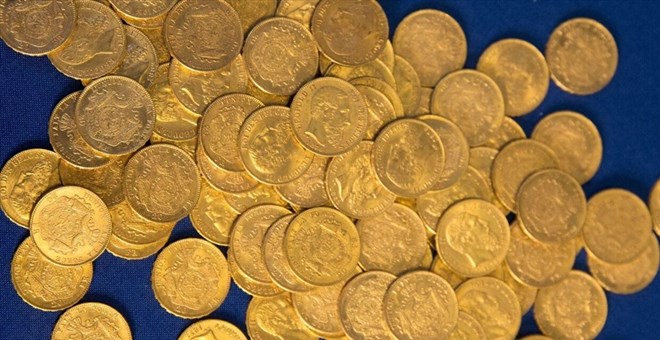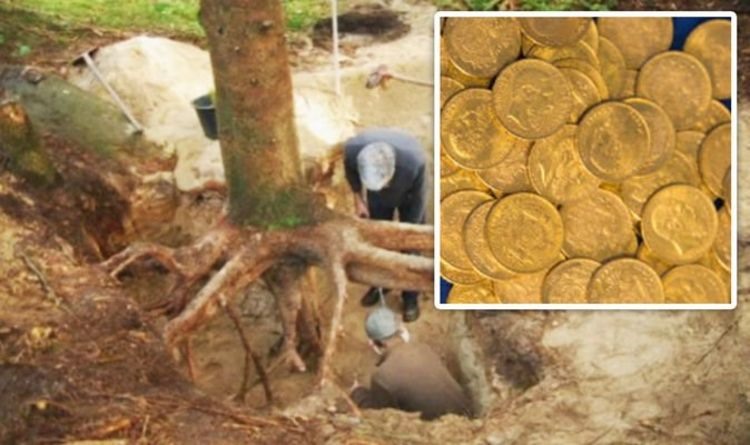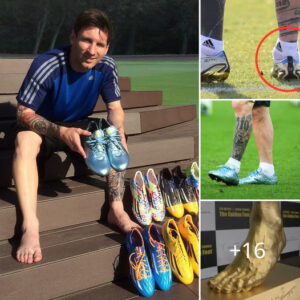A trove of Nazi-era gold coins hidden in the final days of World War 2.

A trove of Nazi-era gold coins discovered by archaeologists in northern Germany is believed to have been hidden in the final days of World War 2.
Metal detector experts made the surprising discovery under a tree near Luxembourg inside an envelope decorated with swastikas and a Nazi eagle, with the word “Reichsbank”. Experts say the clues suggest the coins were stolen from wartime German banks and may have been an inside job, as chaos reigned in the last days of the Third Reich.
According to Express, archaeologist Florian Bautsch found 10 coins near the northern town of Lueneburg and experts later unearthed another 207 gold coins, believed to be from France, Belgium, Italy and Austria-Hungary. .
“I knew I had found something important when the detector started going crazy in my hand,” the 31-year-old said. I took 10 gold coins from the 1 meter deep hole and then I called the authorities.”
The central bank of Nazi Germany was called the Deutsche Reichsbank. Analysis of the gold coins shows that they were produced after 1940.

Mario Pahlow, a local archaeologist, said: “All these were found under a pine tree that is about 50 years old and it must have grown, so we know that they must have been buried in the last days of the war or else soon.
Pahlow and other experts who analyzed the trove said it could be part of the Deutsche Reichbank’s gold reserves and that the money was buried suggesting it was stolen.
Edgar Ring, an archaeologist at the Lueneburg Museum, believes the culprit was probably an insider.
“It was a person who worked at the Reichsbank and had access, which means that it could only be someone there in an official capacity, or someone who took advantage of the situation when colleagues’ money brought,” said Mr. Ring.
The Reichsbank dispersed large amounts of gold, silver and currency in secret stashes across Germany as Berlin fell under Allied bombers.
Most of the coins were minted between 1850 and 1910, with the oldest coin dated 1831.
Chemical analysis shows that the coins were probably minted between 1940 and 1950.
Dr Pahlow said the gold coins in “very good condition” were worth between 190 and 210 euros each, making the collection worth about 45,000 euros. But he added, it is difficult to put a price on their historical value.
“It is reasonable to think that you can buy very nice clothes, including a vest and top hat, with one of these coins,” said Mr. Pahlow.
Mr Bautsch was awarded 2,500 euros for his discovery but said the most important thing for him was to develop his scientific knowledge.
The gold coin collection is now on display at the Lueneburg Museum.





